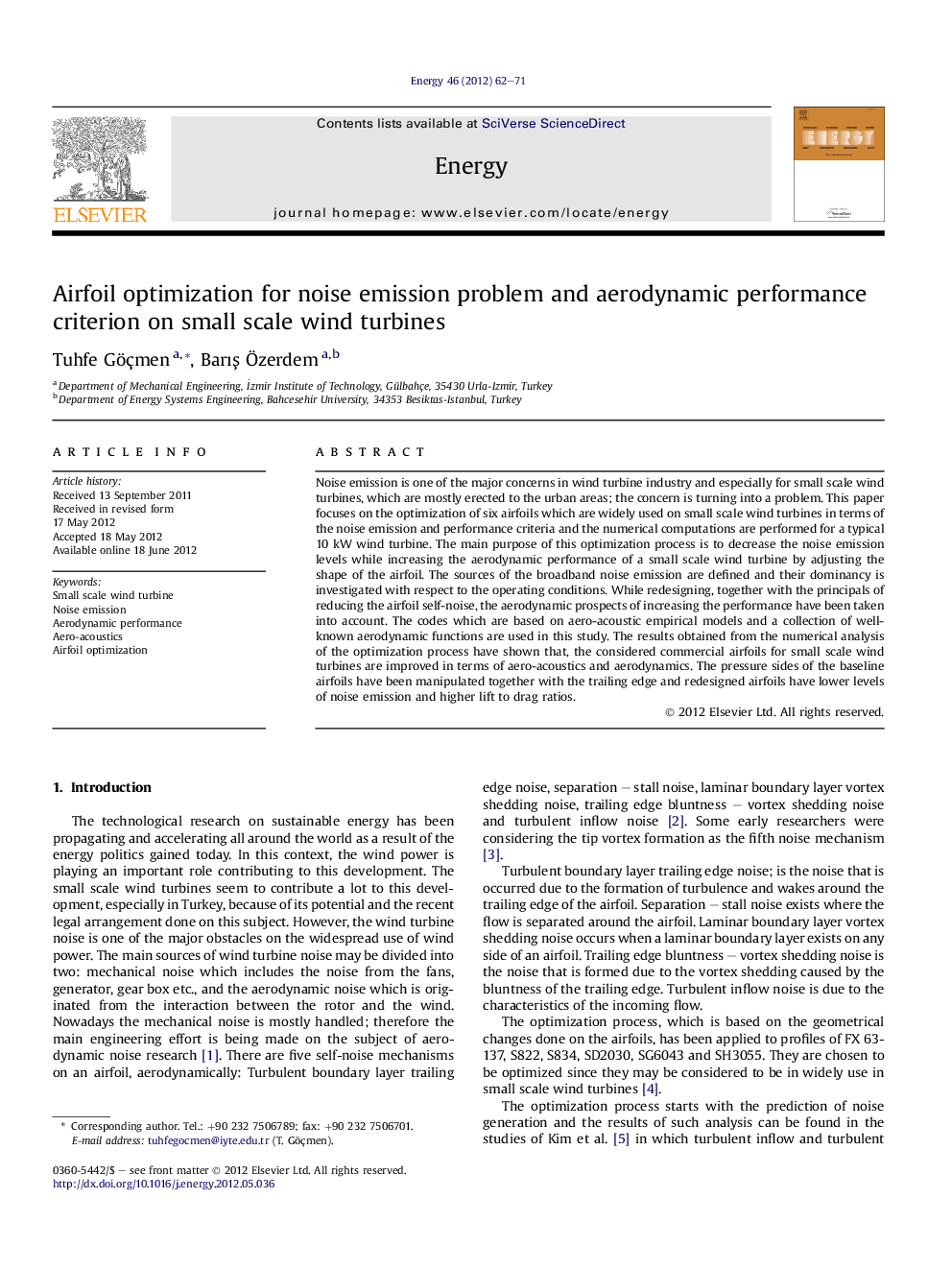| کد مقاله | کد نشریه | سال انتشار | مقاله انگلیسی | نسخه تمام متن |
|---|---|---|---|---|
| 1733398 | 1016141 | 2012 | 10 صفحه PDF | دانلود رایگان |

Noise emission is one of the major concerns in wind turbine industry and especially for small scale wind turbines, which are mostly erected to the urban areas; the concern is turning into a problem. This paper focuses on the optimization of six airfoils which are widely used on small scale wind turbines in terms of the noise emission and performance criteria and the numerical computations are performed for a typical 10 kW wind turbine. The main purpose of this optimization process is to decrease the noise emission levels while increasing the aerodynamic performance of a small scale wind turbine by adjusting the shape of the airfoil. The sources of the broadband noise emission are defined and their dominancy is investigated with respect to the operating conditions. While redesigning, together with the principals of reducing the airfoil self-noise, the aerodynamic prospects of increasing the performance have been taken into account. The codes which are based on aero-acoustic empirical models and a collection of well-known aerodynamic functions are used in this study. The results obtained from the numerical analysis of the optimization process have shown that, the considered commercial airfoils for small scale wind turbines are improved in terms of aero-acoustics and aerodynamics. The pressure sides of the baseline airfoils have been manipulated together with the trailing edge and redesigned airfoils have lower levels of noise emission and higher lift to drag ratios.
► FX 63-137, S822, S834, SD2030, SG6043 and SH3055 has been geometrically modified.
► Pressure side and trailing edge has been the focusing point.
► Flow analysis tool XFOIL and airfoil self-noise analysis tool NAFNoise were used.
► Lift to drag ratios and sound pressure levels has been compared.
► Optimization resulted in better aerodynamic performance and lower noise emission.
Journal: Energy - Volume 46, Issue 1, October 2012, Pages 62–71